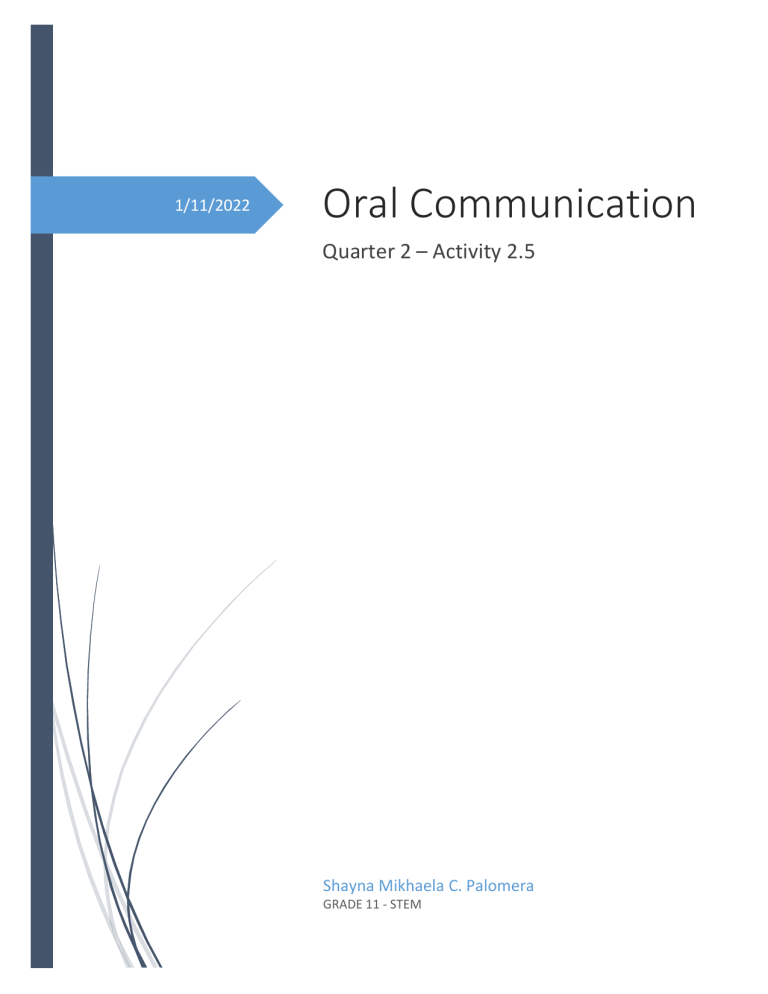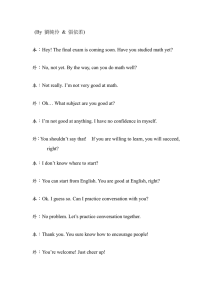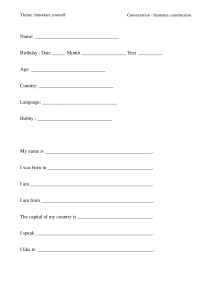Oral Communication Strategies Reflection Paper
advertisement

1/11/2022 Oral Communication Quarter 2 – Activity 2.5 Shayna Mikhaela C. Palomera GRADE 11 - STEM REFLECTION PAPER 7 Types of Communicative Strategy A Reflection Paper Communication is the process of transmitting information between individuals, rather than the process of social interaction (Chopra & Ford, 2005). If I were to give my insights about the Communication Strategy before I watch the video our instructor sent us, I would define it like this. Based on the strategy itself, in my opinion, communication strategies are the way or the strategy on how the communication can be effective. By means, a communication strategy is a way of how communication happens between you and your target audience. However, as I have finished watching the video, I figured out a lot of important details regarding the Communication Strategies. I have learned that Communication Strategies are blueprints for how the information will be exchanged. These are used to start and keep a discussion going, as well as to overcome communication breakdowns. I have learned the 7 types of communication strategies and their contribution to communication, nomination, restriction, turn-taking, topic control, topic shifting, repair, and termination. Nomination is when the receiver or the hearers are trying to nominate the speaker's idea in one conversation. Restriction happens when people are in a conversation, it restricts the response of one person or other people. Turn-taking is when the people in the conversation decide who should speak next so that other people have chances to talk or speak. Topic control happens when a conversation focuses on one topic and the whole conversation bounds only in a given issue. Topic shifting happens when one person in a conversation changes the topic if they want to avoid one certain topic or they are uncomfortable with it. The repair can include clarification and repeating because it aims to repair the conversation if ever that there is a misunderstanding going on. And Termination happens when a person is closing down a topic to end a conversation. For example, in turn, taking, in one meeting you are a leader of one organization and you have a very important event coming up, you have to let everyone speak and take their turns to talk for you to have several ideas to use in your event. Your event will be organized if everyone participates and tells you what they can do. You have to let everyone speak their thoughts to prevent misunderstandings. Besides great teamwork happens when a leader listens to all of his/her member's points of view. Furthermore, knowing communication strategies help us to differentiate the different strategies presented in it. We need to learn the different types of strategies for us to communicate properly. These strategies assist us learners or students in continuing a conversation when they do not understand the words or structures, gaining confidence in speaking, increasing fluency, and presenting an interest in communicating. It helps us improve our communication skills. It provided information that we may improve or use for other academic writings we may encounter. It helps students create situations presenting the different types of communication strategies. And most importantly it helps us, students, establish effective communication.






